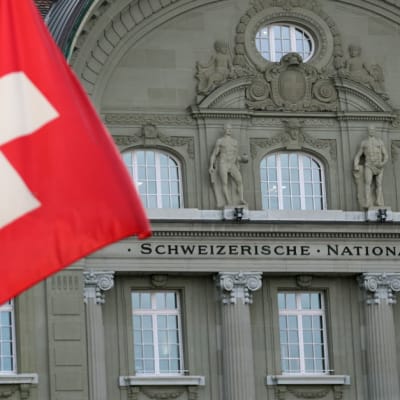Macro and Market Review
Volatility returned with a vengeance in April across assets as the US administration's Liberation Day tariff announcements sent markets reeling. The whipsaw in policy announcements that followed saw huge market moves in both directions as uncertainty rocketed and trade-related headlines drove sentiment. Despite the early April shock, policy walk-backs and a softening tone from the US government saw spreads recover from the wides, leaving total returns for the month flat in both US IG and HY and moderately positive in EUR corporates and treasuries, supported by the Euro duration component. Sector performance was clearly a function of tariff exposure, with import-heavy US sectors such as basic industry and consumer retailers hit hardest.
The breadth and magnitude of the tariffs implemented on 2 April cannot be understated, taking national tariff levels to century-highs and threatening to completely upend the fabric of global trade. Of equal concern was confusion around the way in which the tariffs had been calculated. The new tariffs were headlined as being 'reciprocal' but in reality showed little relation with actual tariff levels currently levied on the US, making it hard to decipher how progress could be made on any potential reductions. The uncertainty generated by the economic upheaval sent risk assets spiralling, with the S&P falling 10% in just two sessions, taking the total sell-off into bear-market territory. Credit markets were somewhat better behaved but still saw US and EUR HY spreads widening by 120 bps and 110 bps, respectively - to the highest levels in two years.
The initial reaction in rates markets was in line with that of a growth shock, as cuts were priced in and term premia shrank, with yields falling across the curve. However, this reversed and actually pushed yields higher as concerns shifted to a potential mass reduction in US asset holdings from abroad. The mixture of risk assets falling, currency depreciating and yields pushing higher is a familiar sight in Emerging Market economies facing balance sheet crises and mass capital flight, but not in the world's biggest economy and reserve currency. Ultimately, it was a sharp move higher in yields in Asian hours on 9 April that threatened financial stability and coincided with a U-turn from the Trump administration. A single social media post saw tariffs reduced universally to 10% for an initial three-month period, from the exceptionally high levels presented a week earlier. This resulted in a huge reversal in risk asset flows, with US stocks posting their largest intraday gains in decades.
The one exception to the tariff reduction was China. As the only nation to retaliate to the Liberation Day announcements, levies there eventually rose to 145%, effectively halting all trade between the nations. These levels are not sustainable, as has been highlighted even by US government officials, but remain in place as of writing. The longer these levies remain, the worse the economic scarring will be.
That said, the U-turn was sufficient to stem the market rout and ease volatility, setting the base for risk assets to recover through the remainder of the month. Further key support came from a softening in trade rhetoric, showing more appetite for bilateral deals. Another risk was removed as Trump confirmed that he wouldn't look to fire Fed Chair Powell despite sharp criticism of his unwillingness to cut interest rates. Concerns around Powell's potential removal had been haunting risk assets and long-end treasuries for some time.
While the news flow from US policy and its impact on sentiment drove markets for the month, fundamental data did produce some interesting points. US growth for Q1 came in lower than expected at -0.3% QoQ, the first negative quarter since 2022, driven by a sharp increase in imports ahead of tariff implementation. Labour market data remained robust though, affirming the Fed's stance that further rate cuts aren't needed imminently, particularly with the inflationary impact of tariffs a looming unknown. The ECB, on the other hand, with fewer pressing inflation issues to hold it back, continued to respond to soft growth with a further cut, but also highlighted uncertainty around trade-induced growth/price impacts moving forward.
Tod down activities
On 4 April, we decided to adjust our Tactical Asset Allocation as follows:
Increase our exposure to government bonds from 30% to 32.5%, moving from Neutral to Overweight 2.5%.
Reduce our position in cash from 5% to 2.5%, moving from Neutral to Underweight 2.5%.
The main reasons for these trades were as follows:
Reciprocal tariffs announced imply a 20-30% increase in the US average tariff rate, higher than expected.
The 2 April announcement increased recession odds and, with the Fed indicating it will look through goods inflation, is lowering the resulting terminal rate expectation of this cutting cycle.
Increasing duration may act as a hedge to our credit exposure in case of further tensions in risk assets.
This increase in government bond exposure/duration will be financed by a reduction in cash.
Bottom up activities
Government pocket
In April, we capitalised on the spike in market volatility due to trade tariff uncertainty. We added 30-year real yield duration, which traded historically cheap, and maintained long-duration exposures in other markets such as Australia and Germany. Additionally, we kept the curve steepening position in the Eurozone. Intramonth, we took profit on a tactical short position in 2-year German bonds.
Investment Grade pocket
April was a month of heightened uncertainty and volatility in markets as participants tried to assess the impact of tariffs on their investments - an impossible task given the daily, or in some cases hourly, changes in messaging from the White House. In such times, we have learnt that the best approach is to generally hold our positions, while looking to exploit pricing dislocations and add names where we like the underlying credit fundamentals at cheap levels.
One such name was Orsted - the Danish off-shore wind company - which has faced a number of headwinds, with the US stepping away from its commitment to off-shore wind projects, resulting in material balance sheet impairments and negative rating action. However, we believe Orsted is committed to maintaining its investment-grade rating (currently BBB negative outlook), has a number of levers to pull, and think the Danish government, which owns 50.1% of the company, will take steps to ensure the company remains investment-grade. We felt that the price action on the corporate hybrids was overdone and bought some at very attractive levels.
The new-issue market recovered towards the end of the month, having paused somewhat following "Liberation Day". We maintained our disciplined approach, only adding oil and gas company Harbour Energy (formally Wintershall), which refinanced its corporate hybrid at very attractive levels considering its solid BBB senior rating.
We continued our very disciplined approach to the new issue market, only adding a new hybrid from laboratory testing company Eurofins Scientific, which came at a very attractive level.
High Yield pocket
In an absolutely seismic month of April, we followed the same approach as in the IG pocket, i.e. to generally hold our positions. However, we were successfully active in CDS indices during the month. Initially, we went long risk (selling protection) on CDX HY just before President Trump's announcement of the 90-day extension to the reciprocal tariffs. Later in the month, given the strong performance of the CDX HY, we decided to take profit and switch into the iTraxx Xover as it had underperformed in the rebound. Finally, at the end of the month, we also took profit and switched back to the CDX HY, as we believe the US, in general, should outperform in the coming days/weeks.
Performance
Year-to-date 2025 review and performance.
SAA: Strong positive contribution.
All segments are in positive territory, with Investment Grade (IG) and Developed Market Sovereign demonstrating the strongest performance.
TAA: Flat contribution.
The segments have contributed evenly to performance, resulting in a broadly flat outcome year-to-date, with no distinct outperformance observed.
Portfolio Construction (PC):
Security selection: Flat contribution.
Negative contribution from issuer selection in the IG segment, which was partially compensated for by selection in HY and Developed Market Sovereign segments.
Overlay: Flat contribution.
Our active duration, notably our long-duration bias in the Developed Market segment, offset a slightly negative contribution from our quant strategies, which temporarily suffered from a rise in volatility.
Outlook
Clearly, the ramifications of April's vast policy shifts will take time to filter through to hard data and corporate fundamentals, but the ultimate outcome of the debacle is likely to be a sizable growth hit to the US and globally, with a heightened stagflation risk in the former as tariff price increases are passed through to consumers. That said, the impact at a corporate level is likely to affect margins more than creditworthiness, and hence may well be more impactful for equities than credit in the short to medium term. Nevertheless, the environment calls for caution, but the sharp reversal seen mid-month on policy shifts can highlight the risk of reducing risk at inopportune moments in such markets. Remaining invested but defensive in credit remains our view, particularly now, with spreads at more elevated levels. We still prefer duration, as we envisage central banks prioritising growth and labour markets if conditions worsen, with inflation shocks likely to be more short-term in such a scenario.











